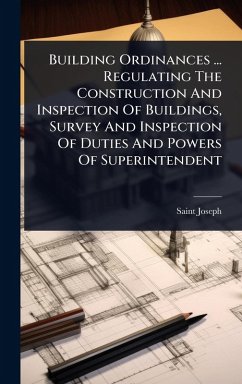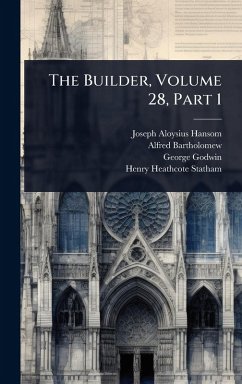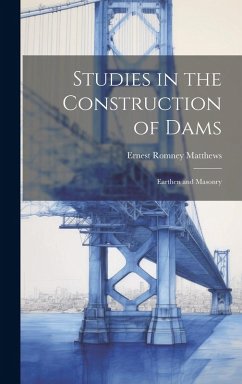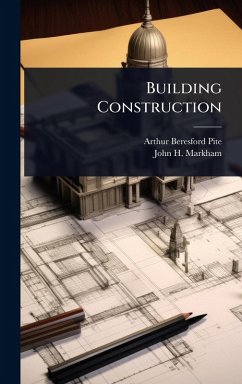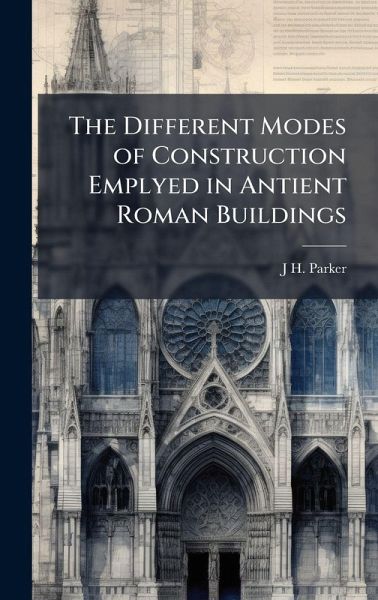
The Different Modes of Construction Emplyed in Antient Roman Buildings
Versandkostenfrei!
Versandfertig in über 4 Wochen
25,99 €
inkl. MwSt.
Weitere Ausgaben:

PAYBACK Punkte
13 °P sammeln!
"The Different Modes of Construction Employed in Antient Roman Buildings" offers a detailed exploration of the architectural techniques used in ancient Rome. J.H. Parker meticulously examines the various methods and materials utilized in the construction of iconic Roman structures, providing valuable insights into the engineering prowess of the era. This work delves into the specifics of Roman building practices, shedding light on the innovations and skills that enabled the creation of such enduring monuments. Essential reading for architects, historians, and anyone interested in classical ant...
"The Different Modes of Construction Employed in Antient Roman Buildings" offers a detailed exploration of the architectural techniques used in ancient Rome. J.H. Parker meticulously examines the various methods and materials utilized in the construction of iconic Roman structures, providing valuable insights into the engineering prowess of the era. This work delves into the specifics of Roman building practices, shedding light on the innovations and skills that enabled the creation of such enduring monuments. Essential reading for architects, historians, and anyone interested in classical antiquity, this book provides a comprehensive overview of Roman construction methods, enhanced by historical context and detailed analysis, making it a valuable resource for understanding the foundations of Western architecture. This work has been selected by scholars as being culturally important, and is part of the knowledge base of civilization as we know it. This work was reproduced from the original artifact, and remains as true to the original work as possible. Therefore, you will see the original copyright references, library stamps (as most of these works have been housed in our most important libraries around the world), and other notations in the work. This work is in the public domain in the United States of America, and possibly other nations. Within the United States, you may freely copy and distribute this work, as no entity (individual or corporate) has a copyright on the body of the work. As a reproduction of a historical artifact, this work may contain missing or blurred pages, poor pictures, errant marks, etc. Scholars believe, and we concur, that this work is important enough to be preserved, reproduced, and made generally available to the public. We appreciate your support of the preservation process, and thank you for being an important part of keeping this knowledge alive and relevant.




![A Scheme For The Protection And Conservation Of Antient [sic] Buildings In And Around The City Of Ahmedabad Cover A Scheme For The Protection And Conservation Of Antient [sic] Buildings In And Around The City Of Ahmedabad](https://bilder.buecher.de/produkte/74/74725/74725194n.jpg)
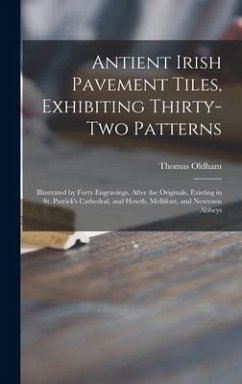
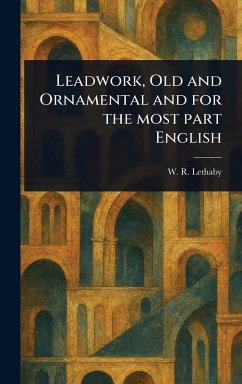
![Old Houses of the Antient [sic] Town of Norwich, 1660-1800 Cover Old Houses of the Antient [sic] Town of Norwich, 1660-1800](https://bilder.buecher.de/produkte/71/71701/71701754n.jpg)
